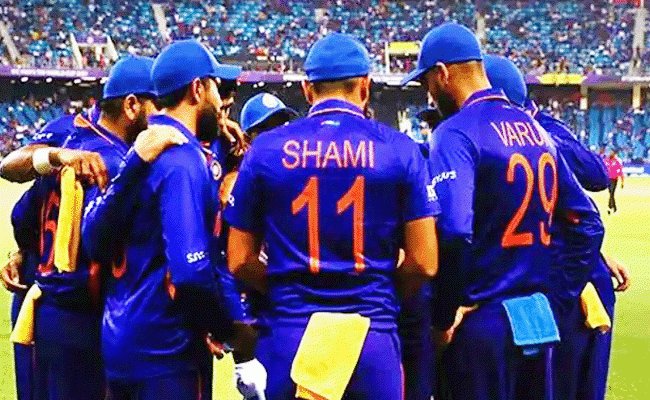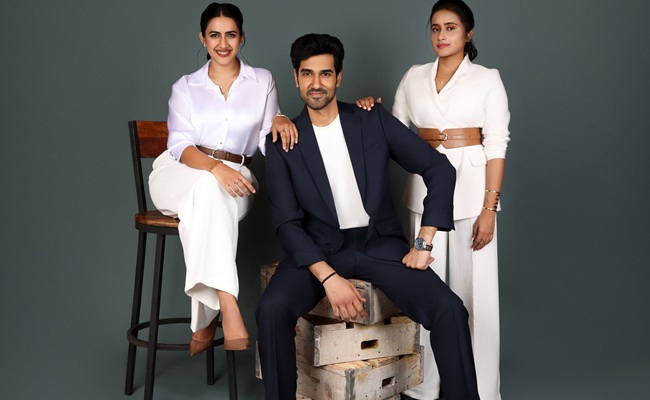
The famous line "to be or not to be that is the question" from William Shakespeare's play Hamlet is appropriate to the present Indian cricket team after their disappointing show in the Asia Cup 2022 in the UAE. In the play and the speech, Prince Hamlet bemoans the pain and unfairness of life but acknowledges that the alternative could have been even worse.
Being the number one T20 ICC-ranked side and the favourites to win, one never imagined that India would come a cropper. India started brilliantly by beating Pakistan in their very first match and the platform was set for them to soar even higher. The defeats, thereafter, put a spanner in the wheel as regards India's progress and in their quest to win the T20 World Cup next month.
The Indian side for the T20 World Cup has now been announced. The normal scrutiny and opinions from experts and critics, of who all should have been there and who should not, makes interesting reading. At the end, the Indian selectors have made their choice and one should accept their wisdom.
The reason for the unhappiness arises because of the performances of many of the Indian cricketers left behind. India have been consistently chopping and changing to find the right combination and squad for the World Cup. In doing so, many of the aspiring players have done extremely well, whenever given a chance, and one does feel sorry that once the proven stalwarts are back, they are shunted into oblivion.
In the last five years, India has had six T20 captains and 20 players who have made their debut for India. Many of these young players are no more in contention, even though some of them did achieve glory when playing for the country.
The T20 is an evolving form of the game of cricket and the short framework of just 20 overs does make it very difficult for one to select players. The aggressive and risk-taking approach does need one to have oodles of luck in order to succeed. In the conventional form of the game, one can differentiate between an ordinary, good and exceptional player from the way they bowl and bat with time not being a constraint, whereas, in the T20, it is very different.
In the shorter format, one plays more instinctively and relies more on anticipation. A dot ball, while batting, is not appreciated and, therefore, most batters in their haste to make runs, unfortunately, err.
The whole gambit of the T20 game creates and gives a wrong belief and notion of a players' ability. How else can one analyse a great bowling performance wherein most of the batters have been either caught in the deep trying to hit the ball out of the park or getting bowled while swinging wildly. The bowler actually believes in his super achievement which would normally be termed as sheer luck.
The irony of T20 cricket is that players of genuine cricketing skills are now looking like stragglers. The much acclaimed and the best batters in present-day cricket, Kane Williamson, Virat Kohli, Steve Smith, Babar Azam and Joe Root look out of place in the T20 format. If players of such calibre cannot be distinguished from the rest, one feels sorry as to what the future holds for the genuine batters. Maybe, these are the last of the 'Mohicans'.
The Indian think-tank, one feels, are a bit confused in their selection, especially of players for the T20s. India has finally found an express fast bowler in Umran Malik. He is young with raw talent, who can be wayward in attempting to break speed records. India did play him in a few matches. However, he proved to be expensive by giving away runs and so was benched for doing so. On the other hand, the medium pacers who naturally are more accurate and, on account of their lack of pace, deliver more variations.
The selectors have gone for the latter as a safer option. However, in batting, it is completely different as the big technically inferior batters are preferred to the more conventional types.
The finisher position is one that is most interesting. This was made popular by Mahendra Singh Dhoni, who had an incredible calculating cricketing brain with the brawn power of one who could hit the ball at will out of the park. For anyone to replicate his capabilities consistently would require extraordinary skill.
The most intriguing part is that a finisher normally comes much lower in the batting order. The question that arises is, why should they expect their frontline batters to fail and surmise that they are not capable of achieving the same success.
The issues faced on selecting a T20 side are not only an Indian problem but one in other countries as well. Ben Stokes, the world's leading all-rounder at present, is a good example of having all the ability and skill but is still not being able to deliver it consistently in the T20 format.
One of the biggest problems that India faces in the upcoming World T20 is the fitness of some of their key players. Rohit Sharma, KL Rahul, Hardik Pandya, Jasprit Bumrah, Harshal Patel, Bhuvneshwar Kumar have all had a niggle in the past three months. They will be tested to the limit and one hopes that they are up to the task.
Finally, one has to give kudos to the Sri Lankan side for winning the Asia Cup. They overcame their initial loss and won when most needed without any star in their midst. Teamwork was their key element as each one contributed to lift each other up at crucial moments.
This truly re-establishes that cricket is a team game after all.
(Yajurvindra Singh is a former India cricketer)













